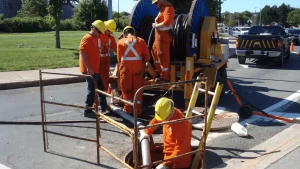Spotting the Subtle Symptoms of a Leaking Aneurysm

Not all health emergencies start with dramatic warning signs. In some cases, the body sends quiet signals that something is seriously wrong. One prime example of this is a leaking aneurysm. In Thailand, awareness of lesser-known vascular conditions like this is low, and recognizing the early symptoms of leaking aneurysm can help save lives.
An aneurysm forms when a section of a blood vessel becomes weakened and bulges outward. This can happen in various parts of the body, including the brain, abdomen, or chest. When that bulge starts to leak rather than burst suddenly, it creates a medical situation that requires urgent attention. Leaking can go on for hours or even days before a full rupture occurs.
Early Clues That Something’s Off
In the case of brain aneurysms, a person might feel a sudden and severe headache that is different from anything they’ve experienced before. Some describe it as the worst headache of their life. Others may have vision problems, nausea, or stiffness in the neck. These symptoms are often mistaken for migraines or tension headaches, especially when they fade and return.
If the aneurysm is located in the abdominal area, the symptoms can feel vague. A person may have ongoing pain in the belly or lower back, which could be confused with digestive problems or muscle strain. Some also report a pulsing feeling near the navel, which might only be noticeable when lying down.
Chest aneurysms may cause back pain, difficulty breathing, or even hoarseness. Because these symptoms overlap with heart or lung problems, they often lead to delays in diagnosis.
Risk Factors in Thailand
High blood pressure is a major risk, and it remains a common issue across Thai communities. Other contributing factors include smoking, heavy alcohol use, or a family history of vascular disease. In some cases, people are born with connective tissue disorders that make aneurysms more likely.
Lifestyle habits also matter. Diets high in salt, common in some traditional Thai dishes, can raise blood pressure over time. While exercise is generally good for heart health, intense or sudden physical strain may cause an existing aneurysm to leak or rupture. That’s why regular health checks are important, especially for those over 50 or with a family history of stroke.
How Doctors Identify a Leak
Diagnosis often starts with basic physical exams and symptom discussions. But because symptoms are often non-specific, imaging is key. CT scans, MRIs, or ultrasounds help identify the size and location of the aneurysm. In emergency settings, doctors may use contrast dye with these scans to see if blood is escaping from the vessel.
If a leak is confirmed, treatment options vary. In some cases, surgery may be needed right away. In others, doctors may choose to monitor the aneurysm closely while managing blood pressure and other contributing factors.
Treatment & Monitoring
Surgical repair is the main approach for serious leaks. This could involve placing a stent or clipping the aneurysm to prevent further blood loss. Recovery depends on the severity of the leak and the patient’s overall health.
For smaller leaks or high-risk patients, doctors might focus on stabilizing the condition with medication. Blood pressure control, regular imaging, and lifestyle changes become essential. Thai hospitals offer these services, often with specialist care available in major cities like Bangkok and Chiang Mai.
Stay Informed
Anyone experiencing sudden, severe headaches, unexplained abdominal pain, or unusual back pressure should take it seriously. While these symptoms don’t always point to an aneurysm, it’s better to investigate than wait.
Awareness of conditions like this is improving in Thailand, but it still helps when individuals pay attention to their bodies and act quickly. By recognizing the early signs, people can avoid major complications and get the care they need before it becomes an emergency.







